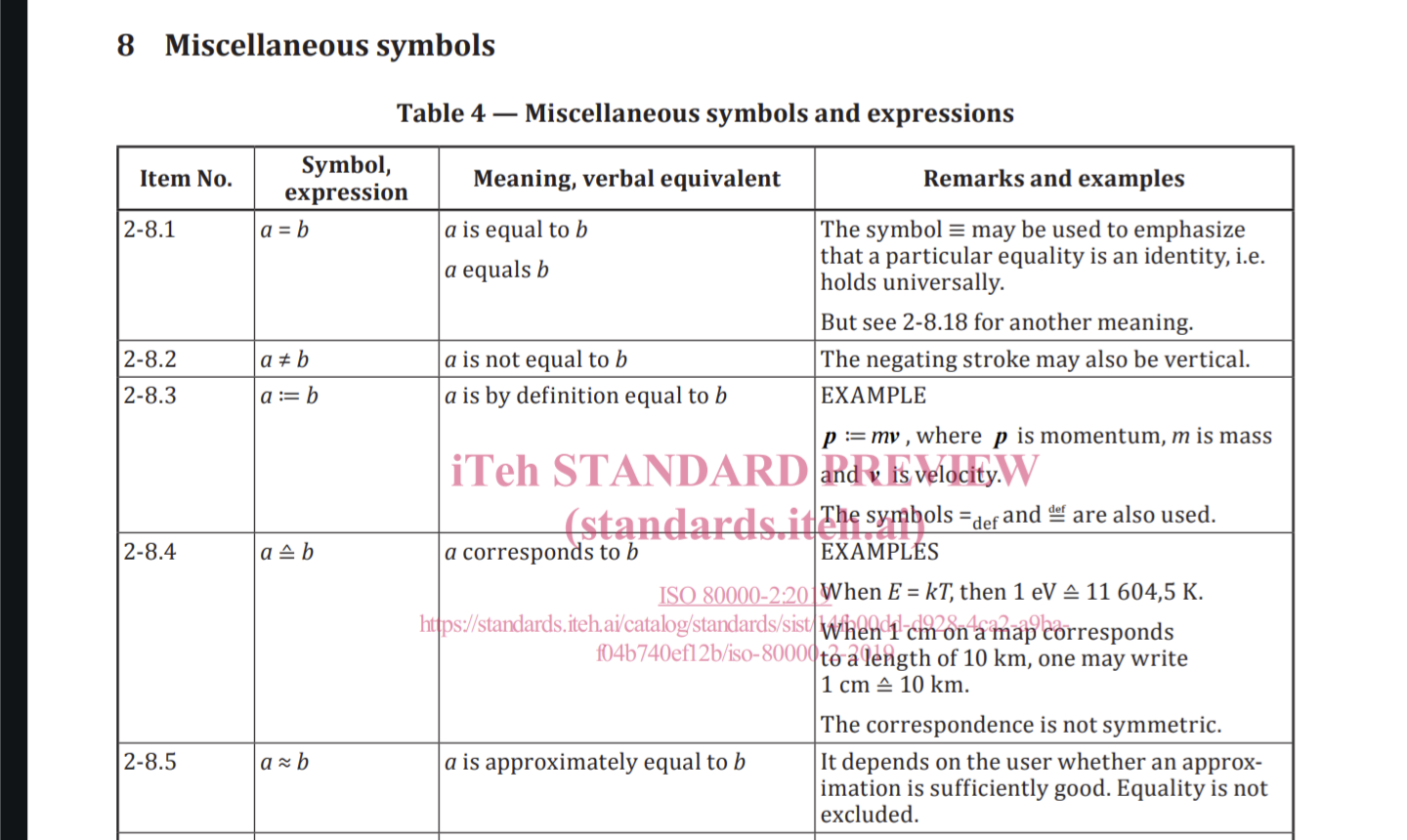Sure! See ISO-80000-2
Here’s a link: https://cdn.standards.iteh.ai/samples/64973/329519100abd447ea0d49747258d1094/ISO-80000-2-2019.pdf

Sure! See ISO-80000-2
Here’s a link: https://cdn.standards.iteh.ai/samples/64973/329519100abd447ea0d49747258d1094/ISO-80000-2-2019.pdf

“Approximately equal” is just a superset of “equal” that also includes values “acceptably close” (using whatever definition you set for acceptable).
Unless you say something like:
a ≈ b ∧ a ≠ b
which implies a is close to b but not exactly equal to b, it’s safe to presume that a ≈ b includes the possibility that a = b.


Just to reinforce your point, the difference between a cheap running shoe and an expensive running shoe is incredible. When I first started running a few years ago, I was using a very old pair of running shoes I’ve had for a long time. I’ve since been sticking with the New Balance Fresh Foam X 880s (because I have very wide feet and NB seems like the only brand that actually makes their best running shoes in 4E) and it’s like running on a cloud.
And then there’s also the Garmin watch that cost $300 (that I’m now stupidly considering upgrading to the new $600 Forerunner 965), the $120 HRM Pro chest strap, the $3000 Nordic Track x22i for indoor runs I got lightly used on Craigslist for a steal at $900, etc.
And then there’s the races where you’re spending $40, $50, $100+ depending on whether it’s a 5K or 10K or half-marathon. And good running clothes are pricey too.
During computer learning in a computer lab 15 years ago, I figured out that the student passwords were sequential, so I could easily guess other students’ passwords. If I logged in to their account while they were logged in, they would get booted and I’d hear the inevitable “Mrs Teacher! It says my session expired!”
I did that 2 or 3 times over the course of a few minutes before I got caught. The vice principal rambled on and on about how I was “disrupting learning” and how I “should be suspended for this” before finally telling me, “my mentor taught me a really important lesson. If your students don’t hate you, you aren’t doing your job.”
What a horrible piece of shit.
It’s a definition from a well-respected global standards organization. Can you name a source that would provide a more authoritative definition than the ISO?
There’s no universally correct definition for what the ≈ symbol means, and if you write a paper or a proof or whatever, you’re welcome to define it to mean whatever you want in that context, but citing a professional standards organization seems like a pretty reliable way to find a commonly-accepted and understood definition.